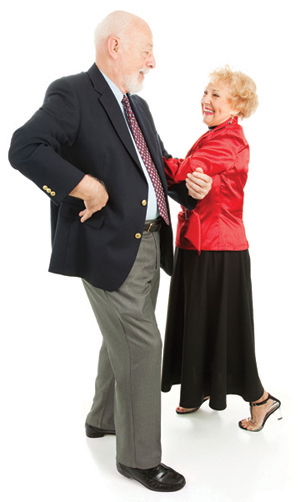Got my Mojo walking
by Sandra J. Hartley, MPE, EdD
Fourteen years ago, I was given a walking regimen that was absolutely fail-proof — a mandatory, no questions asked, have to do it walking plan — twice a day.
It was 1999. I was holding a piece of living fluff called Mojo (little joy) whom the breeder described as a Bichon-Shitzu. A dog! At that size, she had some difficulty organizing her legs and going forward in a straight line. She wanted to lie on her back, be cuddly, get tummy rubs, and chew on things.
Then ‘having to go’ happened. Mojo would suddenly find herself in the back yard, often alone, and soon she learned to ‘go’ outside. Within a week or two, the world at large beckoned. She learned that when the leash came out, we were going for a walk. From that point on, 365 days a year, rain or shine, snow, sleet, or -38C, ‘walkies’ were on the daily menu.
We have done a lot of walking! Two walks a day x 365 days x 14 years adds up to more than 5,000 walking events. If I had kept a log of the pace, distance covered, or minutes per walk, I could tell you how much energy I burned. Alas, it didn’t seem important at the time. Mojo’s statistics are also unrecorded – how many fire hydrants? How many sniffs? How many mud puddles crossed? How many dogs did we meet? How many poop bags used? Frizbees caught?
The important number is this one: it happened every day, and for that, I am indebted to Mojo, my main motivator for fitness first thing in the morning. I would never have walked that much or that regularly without her need ‘to go’. And other things get done along the way. My day gets organized and I get a few cell phone calls made to boot.

Mojo is whining a lot lately, and seems to be wanting something all the time. She is clearly aging, so friends and family encouraged me to have her checked out at her ripe old age of 81 dog years. All she did was impress the vet with superior marks on all the lab results and x-rays. Seems she is simply not getting enough walking to please her.
It is a big commitment but an inspiration to have such a loyal walking companion — one who skips, sniffs, and gallops her way through life. We anticipate many more ‘walkies’ ahead.
About the Author
Sandra J. Hartley is Professor Emeritus, Researcher in Exercise Motivation and Gerontology, University of Alberta, and Life member of ALCOA.
Click Here for print PDF file – Active Living – Got my Mojo walking
Too Fit to Fracture, Part 3
Balance challenges keep you on your feet
By: Lora Giangregorio, PhD
After the age of 40, we lose 0.5% to 1% of the bone mass in our skeleton each year. A diagnosis of osteoporosis means that bones have weakened to the point where they could break from a simple fall.
Osteoporosis affects about 1.4 million Canadians. One in three women and one in five men over the age of 50 will have a fracture due to osteoporosis at some point, often caused by a fall. Fractures can lead to other health problems and loss of function, or independence.
Building balance to prevent falls and fractures
About one in three older adults who still live in their own homes report at least one fall in the past year. Exercises that challenge balance have been shown to prevent falls. Incorporate things that challenge your balance into your daily life or exercise routine. For instance, during your daily walk, switch to some unusual walking patterns, such as alternating between brisk stepping, long strides, and side-stepping.
Walk heel to toe – like on an imaginary tightrope – on the way back from the rest room. Do step-ups, one leg at a time onto a high step. Dancing offers good balance challenges too. Give yourself enough of a challenge that you have to work to stay on your feet, while taking precautions to reduce your risk of falling. Wear appropriate footwear, and progress the challenges slowly.
You can do balance challenges while watching TV or waiting for the microwave. In fact, forward, backward or side lunges are a good way to both build strength in your legs and challenge your balance at the same time. Clock Yourself is a new app designed by a physical therapist to provide balance challenges in 3 minutes per day. It introduces progressively more complex activities to train you to think on our feet and to react quickly.

It takes time to make new exercise habits. Pick one new exercise habit. Plan when you are going to do it. Write it down. When you master it, add a new one. The small habits you create now can prevent falls and broken bones later.
About the Author
Dr. Lora Giangregorio is an Associate Professor of Kinesiology at the University of Waterloo. She is also the Schlegel Research Chair in Mobility and Aging. Her research program focuses on strategies to reduce the risk of fracture, and increase physical activity and mobility in older adults. Lora translates her research into practice by working with government and non-profit organizations and linking with community-based programs. She collaborated with Osteoporosis Canada to develop the Too Fit to Fracture exercise recommendations.
Click Here for print PDF file – Active Living Too Fit to Fracture 3

- Categories
Recent Posts

